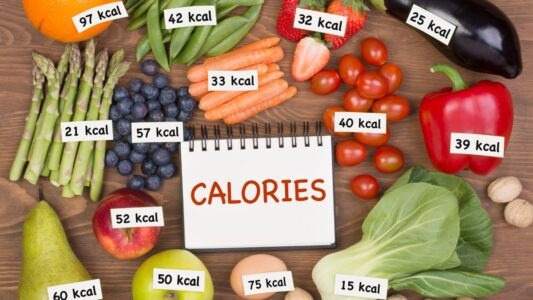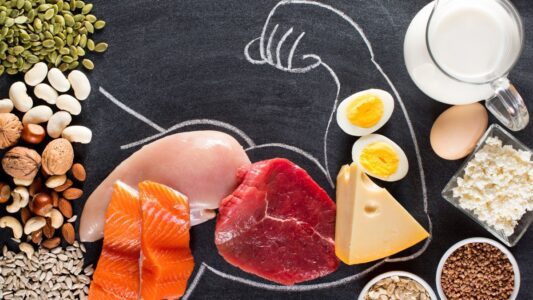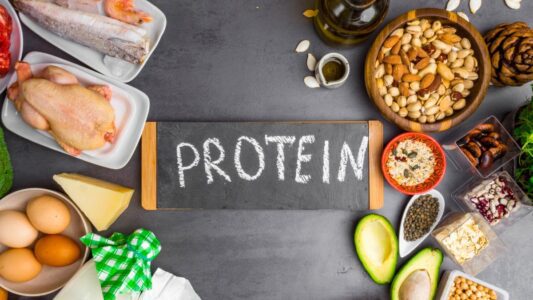
Nutrition
In the previous three parts of this 5 part blog series, we discussed the importance of setting up realistic and goal-oriented plans. Nutrition is an integral part of any training program. Eating right and hydration are as important as doing the right exercise. As the popular saying goes “bodies are built in the kitchen”.
Table of Contents
First Off Let’s Look at Energy Density

Some Foods Contain More Calories Per Every Gram Than Others:
- Carbohydrates: 4 calories per gram
- Proteins: 4 calories per gram.
- Fat: 9 calories per gram.
- Water, Vitamins, Minerals: 0 calories
There is no universally correct balance of daily nutrition intake. Depending on the individual and the lifestyle one leads the nutrition requirement would vary. As a reference point healthy diet should consist of the following:
- 60% carbohydrates
- 25% fat
- 15% proteins
So How Much Energy (Calories) Does One Require?

Basic energy requirement (BER) is the amount of energy you need to maintain your basic life processes, such as breathing and circulation. In addition to your BER, one needs the energy to support one lifestyle. For example, a person with a very physical line of work would require more calories than someone with a desk job. You can use the following calculator to approximate your energy requirement.
Once you have come to a number using the equation, go to the lifestyle section pick the activity lever closest to your lifestyle and multiply the corresponding number by the result of the equation to get your energy requirement. If you’re looking to lose weight, and burn more calories than you take in and vice versa to gain weight, it’s that simple.
The Holy Grail of Body Sculpting, How to Lose Weight and Gain Muscle?

In order to accomplish this, one has to train and consider once nutrition at the same time. Neither training nor nutrition on its own will give you the desired results.
A common belief held by the scientific community is that one needs to consume roughly 300 calories above and beyond your daily calories requirement to gain weight, having said that it’s important to understand that the amount of lean muscle that one can put on is limited by the genetic makeup of the individual. The amount of lean muscle that one can put on varies between 3.5 to 8 kgs.
The Role of Proteins in Building Muscles

When it comes to strength training nutrition, no talk is complete without a discussion on the role of proteins. One of the very first things that one must realize is that the human body does not store proteins. So consuming proteins over and beyond what is required will be excreted from the body.
How Much Protein is Required by Someone Undergoing Training?

It is known that our body can’t absorb more than 25-35 g of protein in a single sitting. So if you consume a shake with 40g of protein, the excess protein will be excreted and the extra calories will be converted to fat and stored by your body. While it might not be practical for some a well-rounded diet every 3-4 hrs will be ideal in this respect.
How to Control Fat?

The body stores the excess calories as fat to be utilized at a stage when food is scanty. Excessive calories can be calculated by subtracting the number of calories one burns from the calories consumed. There is another theory worth mentioning, it suggests that we are genetically programmed to stay within roughly 12 kgs of our optimal weight. So if you drop below the 12 kg of your “optimal weight”, it would trigger the desire to eat. On the flip side if your weight increases beyond the 12 kg mark, food will seem increasingly unattractive.
Why Crash Diets Don’t Work in the Long Run
Your body does not like change. It’s programmed for what physiologists call “homeostasis” or put simply to maintain the current level. The more drastic change you impose on your body, the more your body will fight back. This is one of the primary reasons why crash diets do not work in the long run. When you try to lose a large amount of weight over a short period of time, your body will respond by slowing down your metabolic rate (BMB). BMB is the amount of energy that you use while at rest. A slowdown in the BMB would mean that the number of calories that you burn while your body is at rest will fall.
Drastic loss of weight is a bad idea for another reason; weight loss of over 1 kg per week will result in a far greater percentage of the loss coming from lean muscle tissue instead of fat. So even though you lose weight you will be retaining a lot of fat and losing lean muscle.
Body Mass index (BMI) is a measure of your body fat level
BMI = weight (in Kg)/ height2 (in m2)
Although BMI is a very popular method used to assess body fat levels, there is a problem with BMI as it does not distinguish between the weight of muscles and that of fat. Many bodybuilders and muscular athletes would be deemed obese according to BMI, as muscle tissue is denser and therefore heavier than fat. A skinfold calliper is a far more accurate way to measure one BMI. Any gym worth its weight in salt should have one.
Your Weight Loss Strategy

Your weight loss strategy should be tailored to your particular needs. Depending on your age, gender and lifestyle your metabolic rate will vary and so should your weight loss strategy.
Important Points to Keep in Mind
- Monitor your weight and body fat percentage.
- Asses your weight and body fat levels.
- Don’t get obsessed- weigh yourself no more than once or twice per week.
- Don’t get worried if your weight fluctuated by one or two kilograms.
- Last but not least don’t forget the more muscle mass you have the more calories you’ll burn just to maintain it. So weight training could also help you lose body fat and keep it off.















